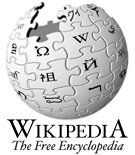Amazing Thailand Value
Wat Chaiwatthanaram
Located on the bank of the Maenam Chao Phraya, to the west of the city island is Wat Chaiwatthanaram. Built in 1630 by King Prasat Thong to honor his mother, Wat Chai Wattanaram was conceived as a replica of the Angkor temple. A Royal monastery, the temples unique feature is a huge prang which is surrounded by smaller prangs. This symbolizes Mount Meru, the abode of the heavenly gods. Now restored, the temple is also accessible by a long-tailed boat trip from Chankasem Palace Pier. This 1-hour trip to the temple costs approximately 300-400 bahts (round-trip). Entry fee to the temple itself is 20 bahts.
Wat Phra Si Sanphet
In 1491, Wat Phra Si Sanphet was located inside the compound of the Grand Palace-the foundations of which are still visible-and served as the royal chapel, as Wat Phra Kaeo does in Bangkok. This Wang Lung Palace (Royal Palace) was built by King U-Thong upon the founding of the city. Used as a residential palace, it became a monastery in the reign of King Ramathibodi I. When King Borom Trai Lokanat commanded the construction of new living quarters, this residential palace was transformed into a temple,and the establishment of Wat Phra Si Sanphet. In Ayutthaya's heyday, this was the largest temple in the city.
The three main chedis which have been restored contain the ashes of three Ayutthaya kings. The temple is situated at the northern end of Si Sanphet Road. The royal chapel does not have any monks and novice inhabitants. Admission fee is 20 bahts.
Wat Yai Chai Mongkhon
Located to the Southeast of the island, this temples lofty chedi is visible from most of the town. The monastery was built in 1900 by King U-thong who granted the temple with the name Wat Pa Kaew. The intention was to create a center of Buddhist studies (Ceylonese Sect). As the temple used to be headed by a patriarch, local people also called it Wat Chao Phraya Thai.
The present name was given granted to the temple by King Naresuan to commemorate a battle fought against the Crown Prince of Burma in 1592. His momentous victory a single-handed combat on the elephant back brought independence to Ayutthaya after 15 years as a Burmese dependent. Within the complex is a huge image of a reclining Buddha in brick and stucco. The chedi is bell-shaped, about 60 meters high, constructed on a mound of raised ground (15 X 32.4 X 32.4 m.) with steps going up to the Buddhist image placed midway to the top. The chedi itself now has a distinct tilt, but still can be entered via the stairs.
The Ubosot or ordination hall is windowless but ventilated by pierced holes stretching down the roof on both walls. Also situated in the compound is King Naresuans statue, which is highly revered by Thais.
Admission fee is 20 baht.
Bang Pa-in Summer Palace
A few miles down the Maenam Chao Phraya from Ayutthaya is the Bang Pa-In Summer Palace. The site was first used by the royal court as a summer retreat in the 17th century. However, the Palace was destroyed with the fall of Kingdom of Ayutthaya and was restored by King Rama IV in the mid-19th century. Most of the buildings that exist today date from the reign of King Rama V, who regularly spent his summers there. The structures represent a variety of architectural styles, set in a large park around ponds and waterways. The only royal residence open to the public is the Chiness-style Wehat Chamroon Palace, constructed entirely of materials imported from China. In addition, there is an Italian-style palace, a circular pavilion with steps leading down to a pool, the graceful Thai-style Aisawan Tippaya Asna Pavilion in the middle of a lake, and, across one of the waterways, a Buddhist chapel in the neo-Gothic style with stained-glass windows. Scattered around the extensive gardens are European statues as well as monuments ordered to be built by King Rama V in memory of members of his family, one of them a much-loved Queen who drowned in a boating accident.
Chao Phraya River Cruise
A cruise along the Chao Phaya River and Thonburi?s vast network of canals is an experience no other Asian capital can offer. However, if you have specifically come here for sightseeing, then a trip to Chao Phraya River in Bangkok suits the best.
Moreover, you can see various traditional old houses, temples, shops and Floating Market on a trip to Chao Phraya River. You'll get a nice tour of many of Bangkok's sites, including the Palace, Wat Arun, and some fancy hotels such as the Oriental.
To approach the spot, you can get on the SkyTrain to the Saphan Taksin stop and getting on the river boats there.
สมัครสมาชิก:
ส่งความคิดเห็น (Atom)

















ไม่มีความคิดเห็น:
แสดงความคิดเห็น